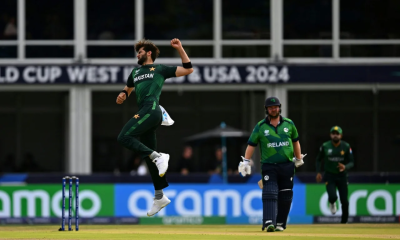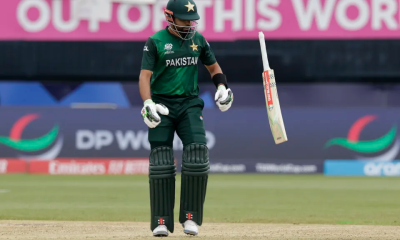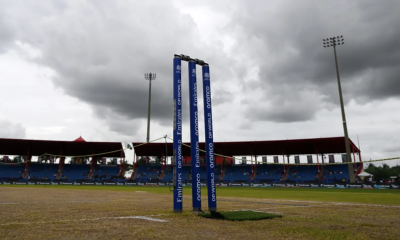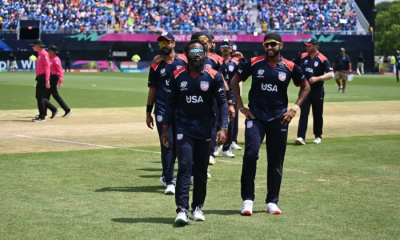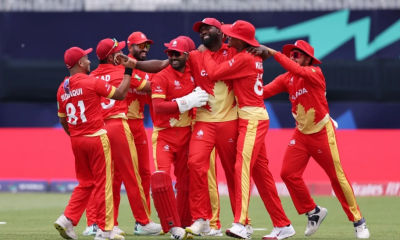Sports
Raza shines as Zimbabwe edge Ireland out in dramatic finish
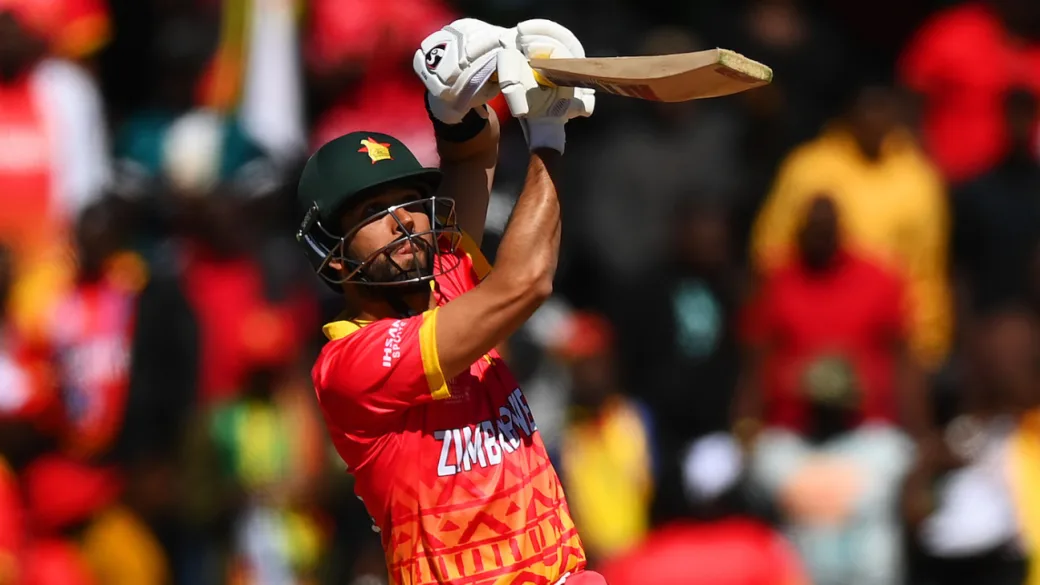
Brilliant catches, dramatic shifts in momentum and a lucky inside edge – Zimbabwe’s last-ball win against Ireland had it all in a game that had you on the edge of the seat for the last few overs.
Sikander Raza put on a clinic with both bat and ball to lead Zimbabwe to victory in the first ever international match under lights at the Harare Sports Club and a 1-0 series lead against Ireland.
But the pace trio of Richard Ngaray, Blessing Muzarabani and debutant Trevor Gwandu would be hailed as equally import heroes in their dressing room, but not for what they did with the ball.
Raza picked three wickets to restrict Ireland to 147 before navigating the chase with a composed 42-ball 65 with wickets falling at the other end and some heated exchanges from Ireland fielders. But Zimbabwe’s work was far from done when Raza fell – thanks to a diving catch by Paul Stirling at cover – with the hosts still needing 11 off nine, and all the established batters back in the dugout.
The equation went down to nine off the final over, and when Ngarava and Gwandu managed only three runs off the first three balls, Ireland seemed to have edged ahead. But Ngarava found a boundary with a leg-side swipe to make it two needed off two.
Sounds simple? Well, not simple enough.
The momentum shifted again when Mark Adai ran back from short third to hold on to a blinder, landing on his neck after a full sumersault in the process and walked off. That left Muzarabani on strike, with two runs needed off the last ball. But to Ireland’s dismay, Muzarabani got an inside edge that beat Lorcan Tucker to give Zimbabwe the two runs they needed to seal a dramatic win.
Ireland dominated the powerplay with both bat and ball, but Raza was key in bringing Zimbabwe back in the game in both innings. Defending 147, Ireland started tightly with the ball and Tadiwanashe Marumani was out early, chipping Barry McCarthy to mid-on. Josh Little then had Sean Williams chopping on in next over to put Zimbabwe further under the pump.
Raza helped inject some momentum into Zimbabwe’s innings with back-to-back boundaries to end the powerplay. When spin came on, Wessly Madhevere reverse-swept George Dockrell for four but was out after one ball, exposing his stumps and missing his scoop.
Raza and Ryan Burl kept Zimbabwe ticking, and the momentum seemed to shift in the 12th over when Raza deposited Gareth Delany over midwicket and Burl powered a drive past long-on in a 13-run over.
But Craig Young threw a spanner in the works with two wickets in two overs. He bounced Burl out, with the batter top-edging the pull behind for Tucker to grab. Young struck again when debutant Bennett ended up hitting aerially to mid-off’s left and Harry Tector completed a stunning take running to his left and leaping to pluck the ball out one-handed.
However, Raza soon got to his 12th T20I fifty before stepping it up. After top-edging Adair for four, he hit a six over fine leg off McCarthy to start off a productive over. Madande pulled McCarthy for a six and four to make it a 19-run over to put bring the asking rate down to run-a-ball.
At that point, Zimbabwe looked set to see off victory without much trouble, but Little castled Madande before Adair dismissed Luke Jongwe and Raza in an excellent penultimate over.
But between Ngarava, Gwandu and Muzarabani, Zimbabwe managed to squeeze out the victory despite the last-over drama.
Andy Balbirnie got Ireland off to a rollicking start, hitting Ngarava for three fours – including two gorgeous cover drives – in the first over. He then took Muzarabani on, slapping him over point for a four and a six. Paul Stirling then welcomed Gwandu to international cricket by hitting him for three back-to-back fours as Ireland raced to 38 for no loss in three overs.
Muzarabani then slowed Ireland’s innings down with some off-pace deliveries. Ngarava reaped the benefit of the pressure created by the quiet over as he returned to trap Stirling in front with a low full toss.
Raza brought himself on immediately after the powerplay and made instant impact by knocking Balbirnie over with a ball that spun in to beat the experienced batter’s attempted sweep and take his leg stump.
Ireland struggled to keep the tempo up against spin as Williams got in the act. He beat the batters with two beauties in his first over – the tenth of the innings – and got in the wickets column in his next as he had Lorcan Tucker caught at backward point. Raza then picked up his second wicket of the night by bowling Curtis Campher.
Brief scores:
Zimbabwe 148 for 9 in 20 overs (Sikandar Raza 65, Wessley Madhevere 25, Clive Madande 20; Joshua Little 2-17, Mark Adair 2-38, Barry McCarthy 2-37, Craig Young 2-20) beat Ireland 147 for 8 in 20 overs (Andrew Balbirnie 32, Gareth Delany 26*, Lorcan Tucker 21, Harry Tector 24; Sikandar Raza 3-28, Richard Ngarava 2-23, Blessing Muzarabani 2-24) by 1 wicket
(Cricinfo)
Latest News
Henry’s onslaught, Harris and Goud’s dream spells get Warriorz off the mark
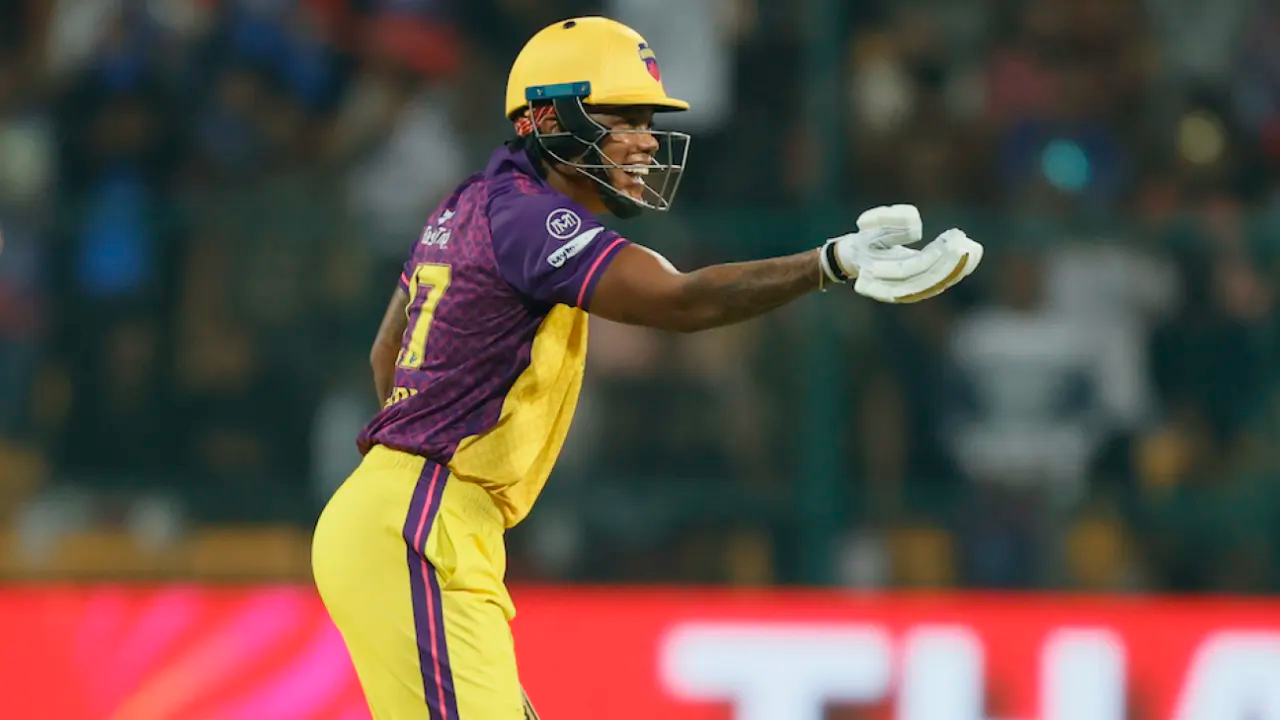
Chinell Henry’s late onslaught, uncapped seamer Kranti Goud’s four-wicket haul, Grace Harris’ last-over hat-trick. UP Warriorz had brilliant moments on the field and produced a thumping win over Delhi Capitals to finally get off the mark, in their third attempt, in WPL 2025. In the first reverse fixture of this season, Warriorz defended 177 by bowling Capitals out for 144 for a 33-run victory. They are also the first team to defend a total in this edition.
The Chinnaswamy Stadium came alive late in the first innings thanks to Henry’s fireworks. From 89 for 6, her entertaining 23-ball knock lifted Warriorz from a potential below-par total to a match-winning one. Striking at an astonishing 269.56, Henry smashed eight sixes and two fours to reach the joint fastes fifty, off 18 balls, in WPL history.
In the chase, Jemimah Rodrigue’s 56 held the fort but Capitals collapsed from 97 for 3 to 111 for 7 and couldn’t recover from the slide. Niki Prasad and Shika Pandey’s handy contributions at the death weren’t enough as Goud and Harris shared eight wickets between them to topple Capitals.
A player’s first season of the WPL could easily make or break her confidence, with performances being put under the microscope. Goud, 21, bowled just four overs in the first two matches in her debut WPL season. Warriorz lost both games and she leaked 47 runs. But Deepti Sharma persisted with her over India seamer Saima Thakor, who had to miss out the second time.
Goud quickly found her feet and repaid the team’s faith in the team’s first game in Bengaluru this season. She was hit for a first-ball four by Meg Lanning but, two balls later, nipped one back sharply to disturb the stumps of Capitals’ captain. She conceded just two off her next over, seventh overall, and dismissed Shafali Verma in her next over with a short delivery. Three overs, 16 runs and two wickets. When Goud finished her first spell, Capitals needed 126 runs from 66 balls.
When she came back for her final over, Capitals had to chase 76 off 36 with Rodrigues going strong after her fifty. But Goud had Jonassen caught and bowled and Rodrigues caught at extra cover in the same over to leave Capitals 111 for 6.
Deepti batted at No. 4 in the opening game, making a 27-ball 39. In the next two games, both against Capitals, she came in at No.3 and made a run-a-ball seven in Lucknow, and 13 off 19 balls in Bengaluru. Whether it’s the ideal slot for her is something to keep an eye on especially when the middle order isn’t firing.
In the last WPL, she accumulated 295 runs at a strike rate of 136.67 in eight innings. She came in at No.3 only once and scored 59. But mostly she batted in the middle order, where she remained unbeaten four out of five times and smashed 218 runs including two fifties, at a strike rate of 143.42.
In this WPL, the likes of Tahlia McGrath and Harris not stepping up in the middle order has been a concern for them. It has left Henry with a lot of rescue work to do late in the innings. In the last match, she blazed away an unbeaten 33 off 15 to power them to 166.
On Saturday, Henry came in at No.8 in the 14th over when Warriorz were 89 for 6 and straightaway dispatched two sixes off Reddy to ease some pressure. She then targeted Pandey, smashing a four and two sixes in the 17th over, and threw a few more big blows before eventually losing her wicket to Jonassen in the final ball of the innings.
Warriorz have been the worst team in the middle phase (from overs 7 to 16) this WPL, having lost 15 wickets in the three games including five on Saturday, but Henry’s unbelievable innings helped them fight back.
The ball was swinging and nipping at the start of the second innings, troubling the likes of Shafali and Lanning. But Warriorz were sloppy in the field, Thakor dropped two catches and wicketkeeper Uma Chetry failed to hold onto chances; however Goud pulled them back. Barring Rodrigues, none in the Capitals top seven was able to adapt to the conditions in Bengaluru.
Even Rodrigues took 19 balls to score her first 23 runs and once she found her rhythm, she grew in confidence and smashed eye-pleasing boundaries to the cover region. She raced to her first fifty of this season off 30 balls. And her eight fours and a six gave Capitals some hope but the middle order let the game slip away from them in the end.
In her own words, Harris is a batting allrounder. But she has not set the stage on fire in this WPL yet, scoring just 18 runs in three games. However, with the ball, she had picked up two wickets in her first two matches and levelled that up on Saturday. She first dismissed Capitals’ Player of the Match from last fixture, Annabel Sutherland, in the 14th over of the chase.
In the final over, with 34 needed for a win, Harris removed Prasad, Reddy and Minnu Manni off successive deliveries to become the third player in the WPL to bag a hat-trick after Deepti and Issy Wong.
Brief Scores:
UP Warriorz Women 177 for 9 in 20 overs (Kiran Navire 17, Deepti Sharma 13, Tahlia Mcgarth 24, Shweta Sheravat 11, Chinell Henry 62, Sophie Ecclestone 12; Jess Jonassen 4-31, Marizanne Kapp 2-18, Shikha Pandey 1-39, Arundhatti Reddy 2-52) beat Delhi Capitals Women 144 in 19.3 overs (Shafali Verma 24, Jemimmah Rodrigues 56, Niki Prasad 18, Shikha Pandey 15*; Chinell Henry 1-42, Grace Harris 4-15, Kranti Goud 4-25, Deepti Sharma 1-25)by 33 runs
[Cricinfo]
Latest News
Josh Inglis 120* seals record win for Australia
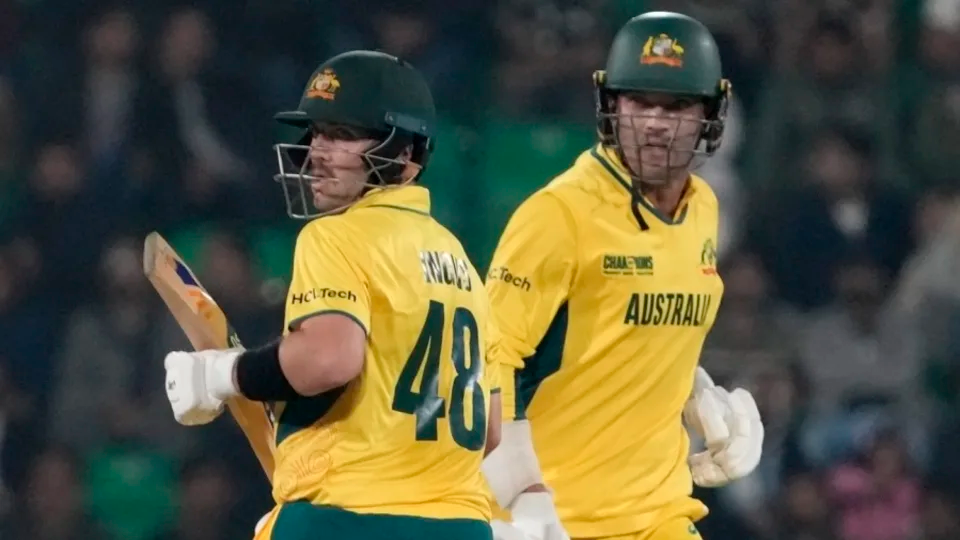
Ben Duckett provided the ruthlessness England so desperately craved with a record knock of 165. But his heroics went in vain as Josh Inglis countered by pummeling a lackluster England pace attack and powering Australia to the highest successful chase in men’s ICC tournament history.
The first match at an ICC event in Lahore since March 1996 saw batting completely dominate this Champions Trophy blockbuster with little margin for error for the bowlers on such a benign surface.
With a mixture of inventive strokes and meaty backfoot blows, England-born Inglis hit his maiden ODI century to finish unbeaten on 120 from 86 balls as Australia reached the target of 352 with relative ease in the 48th over. England’s bowlers struggled to handle the dew under lights, with Australia achieving their second-highest successful ODI chase after their 359 for 6 against India in Mohali in 2019.
It was a bitter disappointment for England, who now face must-win games against Afghanistan and South Africa. They ultimately will rue falling a little bit short with the bat, but Duckett’s magnificent 165 off 143 was the highest individual score in Champions Trophy history. He received strong support from Joe Root, who made a crisp 68 in a third-wicket partnership of 158.
Even though no other batter scored more than 25 runs, England still compiled the highest-ever total in the tournament and took full toll on the least experienced Australian attack at an ICC ODI event since 1983. They were without frontline quicks Pat Cummins, Josh Hazlewood and Mitchell Starc, while seam-bowling allrounders Cameron Green, Mitchell Marsh and Marcus Stoinis are also missing.
However, the result was not a fait accompli on this flat surface, with Australia boasting a deep batting line-up. Australia’s innings mirrored England’s with two early wickets after Travis Head and stand-in captain Steven Smith fell in the powerplay.
Having blazed an unforgettable century the last time he was sighted at a 50-over ICC event, Head loomed as the key but on 6 his swipe hit the toe-end of the bat and Jofra Archer held a sharp return catch.
Smith could only edge to slip a hard-length delivery from speedster Mark Wood, who was in great rhythm and consistently hitting speeds of 150 kph. But Mathew Short and Marnus Labuschagne rallied with a 95-run stand as they took a particular liking to wayward quick Brydon Carse.
Short overcame a lean run of form by superbly using the pace of England’s quicks but legspinner Adil Rashid bowled a brilliant spell in combination with Liam Livingstone that squeezed the batters.
A frustrated Labuschagne hit a slow 70 kph legbreak from Rashid straight to cover before Short on 63 offered a return catch to Livingstone as Australia slumped to 136 for 4.
But Rashid was taken out of the attack after his six-over spell, allowing Inglis and Alex Carey to settle. The pair showcased their strong form having each scored counterattacking Test centuries against Sri Lanka as they got on top of a struggling England pace attack.
Carey sheepishly celebrated his half-century after hitting Rashid straight to deep midwicket only for Archer to drop a sitter. Inglis then whacked Archer for consecutive boundaries as the wheels started to come off for England.
Just as Australia started to gain control, Carey hit Carse straight to mid-off with 70 still needed off 50 balls. But Inglis was unperturbed and mowed a six off Archer to reach his century in style.
Glenn Maxwell was unstoppable before Inglis fittingly sealed victory with a six in a terrific victory for World Cup champions Australia, whose title hopes ahead of the tournament had largely been written off.
Smith elected to bowl after being swayed that dew would play a factor under lights as Australia stepped onto the field at an ICC event without their big three quicks for the first time in nine years.
Australia’s considerably weakened attack was under immediate pressure on a road of a pitch. There was no Starc, but Australia were not short on aggressive left-arm quicks with Spencer Johnson, whose trademark golden locks had been shorn off, and Ben Dwarshuis handed the new ball.
Dwarshuis was selected ahead of Sean Abbott, who had played in both of Australia’s ODI games in Sri Lanka, for match-up reasons although his two early wickets were mostly due to rash strokes.
England’s reshuffled batting line-up didn’t go to plan initially. In a common bane for them, they went a bit hard early with Phil Salt falling in the second over after falling to clear the on-side as a high-flying Carey plucked a one-handed blinder of a catch to his right.
It was a spectacular first-ever ODI catch for Carey as an outfielder and helped justify the decision for Inglis, the incumbent white-ball wicketkeeper, to retain the gloves.
All eyes were on Jamie Smith, who batted at No. 3 for the first time in international cricket – and only the second time in his List A career – in a decision that forced Root, Harry Brook and Jos Buttler to shift down from their usual positions.
Smith stroked a couple of gorgeous cover drives, before falling tamely to the on-side where Carey took a far easier catch on this occasion.
England did not envision being 43 for 2, but they recovered quickly as Duckett and Root cashed in on errant bowling from Johnson and Dwarshuis. Duckett had started relatively slowly, but blasted a boundary off the last delivery of the powerplay as England moved to 73 for 2.
Smith reverted to spin after the restrictions were eased but there was little turn on offer as Duckett and Root easily rotated the strike. Smith was fairly conservative with his tactics and deployed four sweepers.
Duckett showcased his improved prowess of hitting down the ground by targeting Maxwell straight and he reached his half-century in style with a horizontal bat shot off Johnson.
Root was making it look easy, not fussed about hitting boundaries but smartly working the gaps to reach his half-century off 56 balls. He had a perfect opportunity to end a long ODI century drought stretching to the 2019 World Cup as England eyed a total in the high 300s.
But Root got tied down by legspinner Adam Zampa, was was in the midst of a good spell, and missed a rare attempted sweep to fall in a tight lbw after an unsuccessful review. Australia fought back through Zampa, whose subtle variations proved effective and accounted for Brook with Carey taking another terrific catch after a diving effort running backward at point.
Seamer Nathan Ellis also utilised his noted defensive skills and conceded just 51 runs off his 10 overs – the only bowler with an economy of under six.
England feared letting slip a great platform just like they did against Australia at Trent Bridge last September. But Duckett held things together and blasted consecutive boundaries off Johnson to reach his third ODI century.
He punched the air in celebration, but did not waver in his concentration despite being clearly fatigued. Duckett’s brilliant innings finally ended in the 48th over when he was trapped lbw by the legspin of Labuschagne, who was preferred over Johnson at the death and finished with 2 for 41 off five overs.
Archer hit a flurry at the death, but his mood soured later in the night.
Brief scores:
Australia 356 for 5 in 47.3 overs (Josh Inglis 120*, Alex Carey 69, Mathew Short 63, Marnus Labuschagne 47, Adil Rashid 1-47, Liam Livingstone 1-47) beat England 351 for 8 in 50 overs (Ben Duckett 165, Joe Root 68, Jos Buttler 23, Jofra Archer 23*; Ben Dwarshuis 3-66, Marnus Labuschagne 2-41, Adam Zampa 2-64) by five wickets
[Cricinfo]
Sports
How Sri Lanka fumbled their Champions Trophy spot
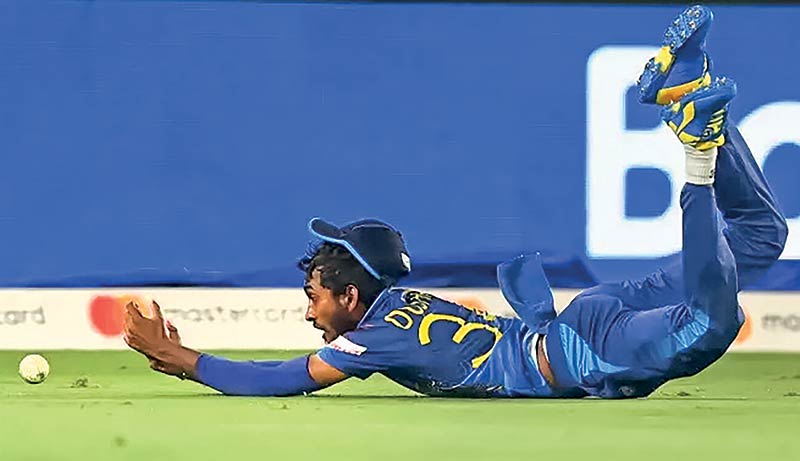
by Rex Clementine
Champions Trophy, one of cricket’s biggest showpiece events is underway in Pakistan and Dubai, but conspicuous by their absence are Sri Lanka – a team that once punched above their weight at ICC tournaments. For the first time since Anura Tennekoon led Sri Lanka to their maiden ICC event, the 1975 Prudential World Cup in England, the men’s team has failed to make the cut.
How did Sri Lanka end up missing out on a tournament of the magnitude of the Champions Trophy? To be clear, this is not a witch hunt to pin the blame on individuals. Rather, it’s a post-mortem to identify where things went off the rails and, more importantly, how to avoid future embarrassments of this scale.
The warning signs had been flashing like a malfunctioning scoreboard for a while. Sri Lanka’s steady slide in the rankings due to poor bilateral performances meant they had to take the scenic route through qualifiers. Ultimately, their ninth-place finish in the 2023 World Cup in India proved to be the death knell for their Champions Trophy hopes. Only the top eight teams went through and Sri Lanka missed out.
Both Sri Lanka and Bangladesh finished with four points apiece, but Bangladesh sneaked through by the barest of margins – thanks to a slightly superior Net Run Rate. This was a case of failing to keep an eye on the fine print, a classic example of losing a game in the dressing room before even stepping onto the field.
From the outset, Sri Lanka’s preparation for the World Cup resembled a game plan scribbled on a napkin – unclear and chaotic. The selection committee, after initially deciding to replace Dasun Shanaka as captain, made a dramatic U-turn at the eleventh hour. Shanaka, in a cruel twist of fate, lasted just two games before being sidelined by injury, and the captaincy baton was hastily passed to Kusal Mendis. Burdened with leadership responsibilities, Mendis lost his golden touch with the bat and Sri Lanka lost their direction.
Fielding was Sri Lanka’s Achilles’ heel and the team management’s approach to fixing it was akin to putting a band-aid on a fractured leg. They hired a foreign fielding coach to create an illusion of progress, but the reality was starkly different. Sri Lanka finished the tournament as the worst fielding side – proof that simply ticking boxes doesn’t win matches.
Take the match against Pakistan in Hyderabad. After posting a formidable 344, Sri Lanka should have won easily. Instead, butter-fingered fielding gifted Pakistan reprieves, and they chased down the target with ten balls to spare. The lapses in the field turned what should have been a regulation win into an agonizing defeat.
Then there was the curious case of Sri Lanka’s inability to bat out 50 overs consistently. In a desperate bid to plug the hole, the selectors turned to Dimuth Karunaratne, hoping his Test match resilience would steady the ship. While the idea had merit – given Karunaratne’s solid showing in the 2019 World Cup – he was inexplicably underutilized, playing just two matches. The end result? The problem persisted, and the batting continued to implode under pressure.
Even amid the wreckage, there were glimpses of brilliance. Sri Lanka dismantled defending champions England in emphatic fashion, thanks largely to Lahiru Kumara breathing fire with the ball. He sent Jos Buttler and Ben Stokes packing, putting Sri Lanka in the driver’s seat. But just when he looked like being the X-factor, Kumara was sent home. The official word was an injury, but murmurs in cricketing circles suggested otherwise. Whatever the real reason, losing a strike bowler mid-tournament only added to Sri Lanka’s woes.
But here’s the good news – Sri Lanka has begun to turn the tide. Currently ranked No. 5 in ODIs, the team has clawed their way back through sheer grit, a clearer strategy, and, most importantly, a no-nonsense approach to discipline. Indiscipline, which once festered unchecked, is no longer tolerated. And it’s paying dividends.
Captaincy, long a poisoned chalice, has now been handed to Charith Asalanka, who is marshalling his troops with composure. The team is slowly but surely putting the heartbreak of missing the Champions Trophy behind them and is now focused on regaining lost glory.
Since their World Cup exit, Sri Lanka have beaten both India and Australia in bilateral ODI series – no mean feat, considering these two sides were finalists in the last World Cup. That’s quite the statement of intent. Adding to the feel-good factor, Maheesh Theekshana has climbed to the No. 1 spot in the ICC ODI bowler rankings, becoming only the second Sri Lankan after Nuwan Kulasekara to achieve the feat.
Off the field, crucial reforms have been implemented to ensure Sri Lankan cricket regains its competitive edge. The domestic structure, once bloated and diluted, is finally being streamlined. The number of first-class teams has been reduced to 14, meaning a powerhouse like SSC will temporarily lose their first-class status after finishing at the bottom. It’s a bitter pill to swallow, but credit to the authorities for having the courage to make tough calls. Next year, the number will be cut further to 12, making the tournament more competitive and weeding out mediocrity.
Additionally, the schools’ first eleven knockout matches have been extended from two to three days, and even Big Matches will now be played over three days, with Sri Lanka Cricket (SLC) footing the bill. This move is aimed at nurturing players who can bat long and take games deep – a skill set that has been sorely lacking in recent years.
Meanwhile, Sri Lanka ‘A’ and the Under-19 teams are getting regular exposure, ensuring a robust pipeline of talent for the future.
Sri Lankan cricket has endured its fair share of setbacks, but the signs are encouraging. The team has taken its knocks, learned its lessons, and is charting a course back to the top. There’s still plenty of work to be done, but if recent performances are anything to go by, the dark days may finally be behind them.
As any seasoned cricketer will tell you, form is temporary, but class is permanent. Sri Lanka may have hit a rough patch, but the fire still burns.
-

 Features6 days ago
Features6 days agoDon’t betray baiyas who voted you into power for lack of better alternative: a helpful warning to NPP – II
-

 News4 days ago
News4 days agoCommercial High Court orders AASSL to pay Rs 176 mn for unilateral termination of contract
-
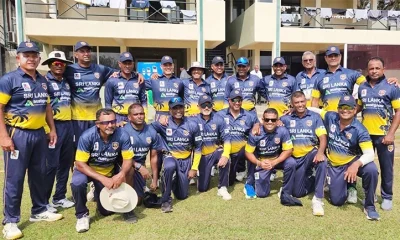
 Sports3 days ago
Sports3 days agoSri Lanka face Australia in Masters World Cup semi-final today
-

 Features6 days ago
Features6 days agoTwo films and comments
-

 Features5 days ago
Features5 days agoUSAID and NGOS under siege
-

 Features5 days ago
Features5 days agoDoing it in the Philippines…
-

 News3 days ago
News3 days agoCourtroom shooting: Police admit serious security lapses
-

 News4 days ago
News4 days agoFSP lambasts Budget as extension of IMF austerity agenda at the expense of people


